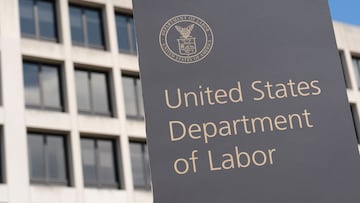Unemployment benefits: why are claims for unemployment checks falling?
Unemployment claims are decreasing as the US economy continues its recovery but there may be more to the story than favorable economic winds.

The latest numbers from the US Department of Labor for October showed unemployment claims dropping again in October but this is as programs put in place at the onset of the pandemic are winding down.
In the spring as the novel coronavirus began its tear across the globe much of the world economy came to a grinding halt as restrictions were placed on everyday activities. In the US, the ensuing layoffs and lost revenues forced politicians to act to keep the economy from complete collapse issuing coronavirus stimulus checks, expanding unemployment insurance, and creating Pandemic Unemployment Assistance.
The PUA is set to expire before the end of the year
The Pandemic Unemployment Assistance was part of the CARES Act one of the stimulus measures that the US government passed to ease the financial burden American families and businesses were experiencing. The PAU allowed for workers that do not normally have access to unemployment insurance to receive up to 39 weeks of benefits. At the same time topping up regular state unemployment insurance programs, in most states lasting 26 weeks, by 13 weeks.
However, the economic hardship experienced by many Americans has outlasted those benefits and the program itself is set to end before the year is out if no further action is taken. At the end of October there were 21 million Americans receiving either state or federal unemployment assistance but there may be more Americans that are not accounted for in the official numbers who need assistance.
- Trump says he wants a coronavirus stimulus bill
- Second stimulus check: can Trump approve it now?
- Second stimulus check: where does Biden stand on $1,200 payment?
- Which states still pay $300 extra unemployment benefits?
- Can Trump refuse to sign a new coronavirus support package?
- 21 November deadline to claim missing $1,200 stimulus check
How is the unemployment rate calculated?
Another sign that shows the economy is forging ahead, unemployment dropped again for the sixth consecutive month. According to the latest data from the Bureau of Labor Statistics the October unemployment rate was 6.9 percent down from its high of 14.7 percent in April. Most of this is due to people going back to work but the way the number is calculated does not take into account everyone who is not working.
The standard unemployment rate is calculated by dividing the number of unemployed individuals by the number of individuals in the labor force, be they employed or unemployed and multiplying that figure by 100. If a person has not actively sought employment in the preceding four weeks, they are no longer in the labor force per se.
Related stories
These people can include discouraged workers who feel there isn’t a job for them or people that have to provide their own childcare or care for a family member but aren't able to work in the "labor force". These people are "jobless" but not calculated in the unemployment rate. So, the “real” unemployment rate can be higher, according to the Bureau of Labor Statistics the standard rate in March 2020 was 4.4 percent but the real rate was 8.7 percent.
Stimulus checks still pending payment
The Economic Impact Payments or $1200 stimulus checks were a one-time payment that were automatically sent out by the IRS, however there are still an estimated 8.7 million Americans that are eligible that have not received one yet. Those people can still apply for a stimulus check but time is running out.


